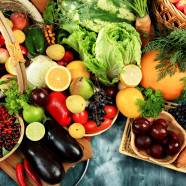
For the past few years, the global debate has intensified around food security. It’s become part of the international policy arena with the term used to focus attention on accelerating global food production to feed an expected 2 billion more people taking the total to 9 billion by 2050.
A tall order judging by recent comments from The Mary Robinson Foundation at a Dublin conference in mid-April in which the advocacy group presented research on the challenges linked to feeding the world due to climate change. They claim agricultural production will need to increase by 60% just to meet the growing demand between now and 2050.
The advocacy group added that over the next 40 years climate change, water scarcity and land degradation could reduce food production by one quarter, leading to increased numbers of food insecure people with those in the poorest countries most acutely affected.
Malthusianism-like? Perhaps. Certainly the statistics have certainly captured the imagination of policymakers, politicians, scientists and industry. And rightly so, as ignoring them could have dire consequences for future generations. It’s why these folks continue to frame the conundrum around food security and part of the solution is to enhance food production through new technologies and agriculture practices.
But increasing production isn’t without its challenges from a practical, conceptual, philosophical and ideological perspective. It’s no surprise there are continual attempts to reframe the debate and this is more apparent from a wider political and economic context, such as with the ‘food sovereignty’ which has gained traction in Asia.
Whereas food security refers to the access, availability, sufficient quantity and quality of food for citizens, food sovereignty’s common definition is the ‘rights of peoples, communities, and countries to define their own agricultural, labour, fishing, food and land policies, which are ecologically, socially, economically and culturally appropriate to their unique circumstances. It includes the true right to food and to produce food, which means that all people have the right to safe, nutritious and culturally appropriate food and to food producing resources and the ability to sustain themselves and their societies’.
It’s a mouthful. So in short, it is a framework that inherently grants people and governments the right to determine their policies on food and agriculture and is effectively a means towards attaining food security. Historically, it is seen as a policy framework targeting globalization (and supporters such as WTO, World Bank and IMF) and particularly agriculture which is used by groups such as the international farmers’ movement, La Vie Campensina, in their global advocacy work and across Asia.
Food sovereignty has crept up the political agenda in Indonesia and is used as part the country’s policy for the Food Law. Why? It’s been attributed to a political reaction to worsening inequality despite a decrease in poverty, the scourge of malnutrition, volatile international food prices, and concerns about a market concentration in the food system.
The food sovereignty policy has already had an impact: that is to negate trade rather than promoting the formulation of trade policies that serve the rights of people through food that is affordable and sustainable for society. It remains to be seen the full extent of the policy towards agriculture but the food sovereignty model need not be at odds with trade openness.
There are many policy paths to ensuring food security.
Matt Kovac is Director of Advocacy at CropLife Asia based in Singapore.



Recent Comments